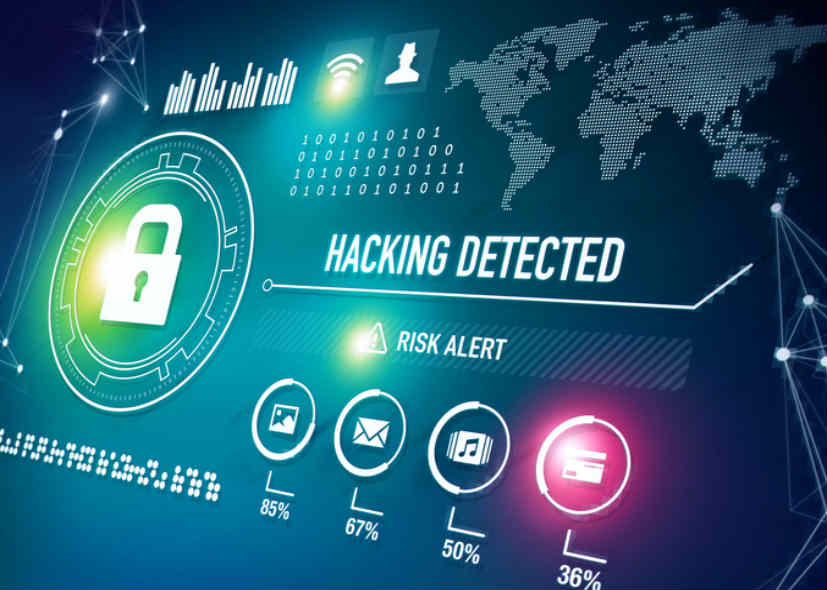Cybercrimes are not going away. As technology advances and creates solutions, hackers are getting even savvier. According to Cybersecurity Ventures, cybercrimes will cost $6 million annually by 2025. In 2015, cybercrimes cost $3 million; that tells you that these crimes are on the rise.
As the cyberwar rages on, businesses are suffering the effects of breaches. From Yahoo, Adobe to eBay, big companies have had their reputation and profits dwindling even to the point of closure. Small businesses are also under attack. With fewer resources and capacity, these businesses cannot afford the mildest of cyber hacks.
Thankfully, it’s not all bleak. There are steps you can take to safeguard your business from such attacks. Here are a few that you can implement immediately.

Create a Cyber Security Policy
It’s natural: your first response to cyber breach might be to go gung-ho, sack people, and get an antivirus. However, instead of waiting for the fire to start before doing something about it, take the initiative. Develop a policy framework that spells out expectations of every person in the company. Such a document should be clear and precise. A basic IT security policy should answer questions like:
- Who does what? Who handles specific equipment, and what are the rules of engagement? Who is in charge and who should be held responsible?
- How is remote work conducted? What are the protocols for accessing servers and working remotely? How about a BYOD set up?
- What is the maintenance and review strategy?
- How are the customers’ data handled?
- What is your backup strategy?
- How do you get rid of old computers and devices without compromising security?
- What are the steps to be taken if a breach occurs?
The Federal Communications Commission has a resource that you can use to create a customized cybersecurity plan for your business at no fee.
Find Secure Ways of Transmitting Information
For many businesses, a significant part of their work involves sending and receiving some sort of data. Whether it’s internal communications, B2B or B2C, the way companies handle such data can be a make or break for their companies.
While emails have become a feature of everyday communication, they may not be the best option for sensitive file transfer. With malware and phishing attacks all-too-common, email inboxes are a favorite for hackers.
Another viable option is to fax sensitive information. Perhaps you shook your head as you read that, thinking about the cumbersome fax machines that would be required. Well, faxing has evolved. Now, you can send online faxes using apps without losing the security traditional faxing gives. According to efax.com, an online faxing system, you can send a fax that is encrypted in transit, in only a matter of minutes.

Train Your Personnel
True, most hackers are not company employees. However, the reality is that many hackers capitalize on what is known as “insider threat.” Insider threat refers to employees unwittingly giving access to hackers. Surprisingly, this is one of the most common reasons breaches occur.
According to a study by the Ponemon Institute, 62% of personal indicated that they had access to sensitive data that didn’t quite concern them. Without a thriving culture of security consciousness amidst your employees, they might leave the backdoor open. Conduct training regularly to keep your workers updated on the best practices on the internet.
For instance, employees should not share passwords or visit unsecured sites. They must avoid inserting hard drives and pen drives into your company computers and systems unless IT personnel vets such devices.

Tighten Your Security System
Ensure that your security system is always foolproof
All it takes is a small loophole, and your business may come tumbling down owing to a security breach. That’s why you have to keep your eyes on the ball and ensure that your security system is always foolproof.
Start by using robust antivirus software. Good antivirus software should protect you from and alert you about incoming attacks. Restrict access to sensitive data to only the employers who need such information. Construct passwords smartly, and they should be changed periodically. All passwords should not be built arbitrary but rather follow an established password policy.
Encrypt sensitive data. Encryption ensures that even if there’s a breach, the hacker wouldn’t be able to make sense of the information. Take steps to backup your data and use secure email outlook. You can choose to store data on your premises, through colocation, public cloud, or on a private cloud. Whichever option you go with, make sure it’s secure. Two-factor authentication is also a great way to safeguard your system.
Install and activate a firewall on all devices within your system. Firewalls are a tried and tested way of foiling malicious attacks. Additionally, do not forget the physical security of your hardware. Most companies tend to focus on online security so much that they forget that breaches can happen physically. If need be, hire security personnel to keep an eye over your systems.

Audits and Risk Assessments
Hackers keep evolving and finding new ways to get around the security system of companies. That’s why you must conduct periodic audits on your security architecture to see if it is strong enough. Continuously assess your system to find out what the risks are and where attacks could potentially originate. It may serve you well to bring in a risk assessment analyst to review your system and give recommendations.
Once you know where potential risks are going to come from, you can prepare and neutralize those threats with ease. There are even some companies that hire security companies to try and hack their system as a trial to see if the security architecture can withstand the onslaught of hackers.
In a Sum
When it comes to cyberattacks, it’s a question of “when”, not “if.” It’s almost inevitable that at one point or the other, your business would suffer some attack. Whether or not you would withstand or crumble depends on the preparations you’ve made.
Start by creating a policy guideline that details your goals, plans, and strategies. Use secure ways to transfer information and tighten your security system. And even more crucially, conduct periodic audits of your system to ensure you’re never surprised by an attack.










